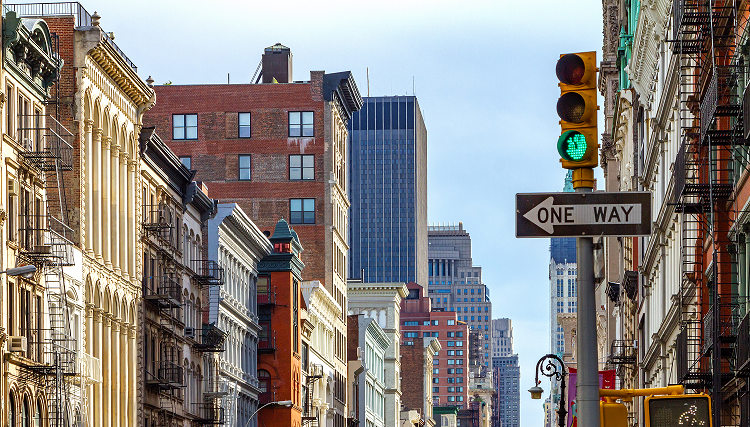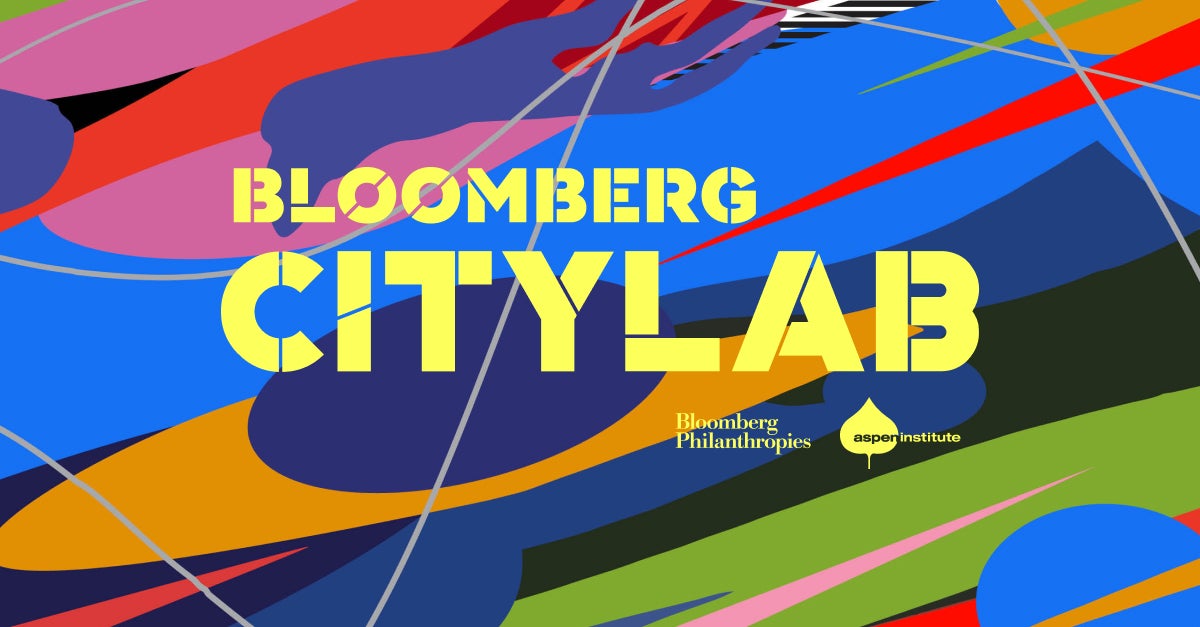Eduardo Staszowski is a design strategist and educator who seeks ways to enhance participation in policy development and civic design. He is Associate Professor of Design Strategies at The New School, and the co-founder and Director of the Parsons DESIS (Design for Social Innovation and Sustainability) Lab, an action-research laboratory created in 2009 at The New School in New York City which aims to advance the practice and discourse of design-led social innovation and foster more equitable and sustainable cities and lifestyles.
This interview is part of the Aspen Institute Center for Urban Innovation’s series of conversations with inclusive innovation practitioners.
Jennifer Bradley: How do you think about the relationship between tools and values?
Eduardo Staszowski: The first thing I think about when I hear this question is outcome and process. There is inclusion as an outcome, but there is also inclusion as a process. We want cities to be more inclusive, but we want the process of innovation also to be more inclusive.
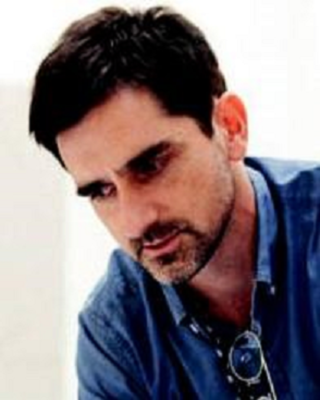
Eduardo Staszowski, Associate Professor of Design Strategies, The New School; Director and co-founder, Parsons DESIS Lab
When we talk about process, we’re talking about an exercise of collective power, of inclusion, diversity, citizenship, and belonging as core values to fight the negative impacts of urbanization processes that we’re living today, specifically to do with speculation in cities, displacement, when social networks lose their ties and disintegrate, homelessness, race, and marginalization.
JB: Which tools do you use in your practice?
ES: I follow a tradition of participatory design. It’s an approach that is often collaborative and thus it takes an inclusive approach to innovation. Inclusion is a process that you establish to form publics before the actual design starts. Participatory design creates the publics that will then somehow create the situations where the themes I just mentioned can be challenged and the relationships can be reviewed and renewed.
JB: So in your framework, public is never singular. There’s always a series of publics, plural, that participatory design or empowerment or agency moves through, so that there is a particular group of people called upon to be a public at a particular time.
ES: Yes. I think there are different publics. Of course, we can talk about public as something that we share and we view together now, but talking about it in terms of a plural helps us define how the process happens rather than beginning from an assumption of who owns the problem and who has primary responsibility for dealing with an issue.
There are three possibilities for practicing these collaborations. Sometimes they combine, and sometimes they overlap.
The first one happens when design amplifies what already exists. The participatory design is not what we’re designing. Design is rather amplifying somehow the lived experience of a community and ideas that communities already came up with. In this way, we’re not designing, we are amplifying the design (understood in a more capacious way, and not via a designer-client relation) that already exists. We’re engaging with innovations that these “non-designers” have already created.
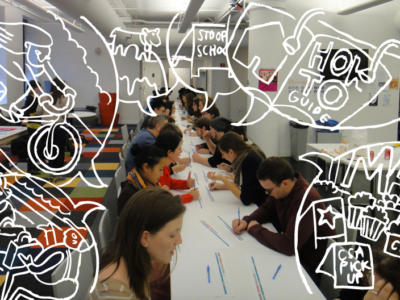
Courtesy of Parsons DESIS Lab
The second one is when the design is, as much as possible, an open-ended process for community appropriation and transformation. The design is something that is not finished. It’s a scenario, which presents possible visions of the future. It’s something that is open, and we could say this is a moment of co-design and negotiating possibilities. There’s something that is offered but it is not finished, and it’s then co-designed.
The third one is when design is not a design of something, but is the constitution of a design situation. We’re designing the conditions, we’re preparing the community or the communities to form, and to design themselves. We could call this third category, meta design, because it’s the design of the design. You’re not doing the design; you’re designing the design process.
These are three broader categories of how we can design: redesign, co-design and meta design.
If we talk about tools more specifically, tools can also be applied in these three conditions, in these three possibilities. The first one, I’m calling tools for seeing. The tools for seeing are what we call tools for observing, for making sense, for articulating, representing the reality and the issues at play. We’re recognizing the actors, we’re recognizing the networks, we’re recognizing the systems and the systems can be technical, institutional, and ecological. These are complex relations, and we’re trying to make sense of them, we’re trying to understand what are the concerns, the gaps in the systems, the redundancies.
We’re looking at what exists. We can also use system thinking and system mapping, so we can understand the broader picture. We can talk about users’ or participants’ journeys through those systems.
The second one is when the design process starts to become more imaginative. We’re talking about tools for foreseeing. For instance, we can imagine, use tools to imagine and propose new possible configurations, from what we saw. We can start talking about what-ifs. We’re imagining what’s not there. Some people call this probing, probing into possible futures. We are proposing something new.
These are also tools for synthesis, for translating, for combination, for clustering ideas in relation to what exists and your constraints. We have our ingredients that we identified in the first place, and now we’re trying to make something out of this. This is where ideas appear and where design and designing occur.
This is what happens in this space of imagining: to be imaginative around what exists and what it can be. We’re basically making a guess of what might be. This is the second set of tools.
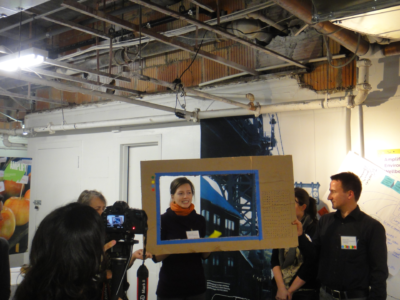
Courtesy of Parsons DESIS Lab
The third set of tools are the tools for make-seeing. These are tools for visualizing, for representing, and for making the possible tangible. It’s testing the feasibility of the ideas we had in the previous stage. We are trying to engage the different publics, with the possibility of seeing what the future could be. Here, there’s a lot of emphasis on prototyping.
We’re trying to make people believe and make see, and make everybody see that this could be a possibility. We’re already testing something. There’s an evolving idea that needs to be seen, to be tested before it can become, if we wish, implemented or become reality.
JB: Are there tools that you don’t use?
ES: Participatory design happens within complex organizational and political contexts. I have a problem with tools and toolkits that tend to over simplify and avoid antagonistic political issues by trying to keep such conversations under control. This over simplification and superficial engagement can be a way of dodging politics, or even worse, a way of undermining politics entirely. We need to be careful with tools that create an illusion of participation and inclusion.
JB: Are there tools that you wish existed but don’t?
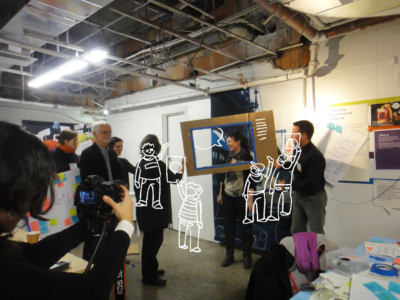
Courtesy of Parsons DESIS Lab
ES: Maybe we have to start thinking about tools for inclusion as empowering devices that are meant to let the participants lead and not to be led. No matter how good the tools are, there’s this risk that they become an imposition.
JB: How should we think differently about tools?
ES: Tools for inclusion shouldn’t be only about ensuring that people are heard in order to advance technocratic reforms and efficiencies. Rather, they should enable a process of active cooperation where divergent interests are debated and dissension may offer opportunities for meaningful democratic engagement.
This interview has been condensed and edited for clarity.
This blog series is supported by the Citi Foundation, a vital early supporter of the Center for Urban Innovation at the Aspen Institute. With the Citi Foundation’s help, the Center convened leading-edge practitioners to develop a shared set of principles to guide a cross-sector approach to inclusive innovation in low- and middle-income neighborhoods, and to determine how the Aspen Institute could support this practice.
